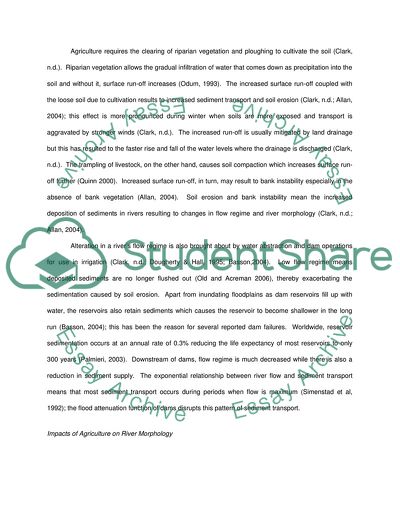Cite this document
(Rivers and Their Catchments: Physical Impacts of Agriculture Essay, n.d.)
Rivers and Their Catchments: Physical Impacts of Agriculture Essay. Retrieved from https://studentshare.org/agriculture/1737430-assessment-of-the-impacts-of-agriculture-on-river-systems-and-mitigation-options
Rivers and Their Catchments: Physical Impacts of Agriculture Essay. Retrieved from https://studentshare.org/agriculture/1737430-assessment-of-the-impacts-of-agriculture-on-river-systems-and-mitigation-options
(Rivers and Their Catchments: Physical Impacts of Agriculture Essay)
Rivers and Their Catchments: Physical Impacts of Agriculture Essay. https://studentshare.org/agriculture/1737430-assessment-of-the-impacts-of-agriculture-on-river-systems-and-mitigation-options.
Rivers and Their Catchments: Physical Impacts of Agriculture Essay. https://studentshare.org/agriculture/1737430-assessment-of-the-impacts-of-agriculture-on-river-systems-and-mitigation-options.
“Rivers and Their Catchments: Physical Impacts of Agriculture Essay”, n.d. https://studentshare.org/agriculture/1737430-assessment-of-the-impacts-of-agriculture-on-river-systems-and-mitigation-options.


